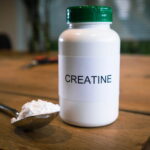Biological sample storage isn’t just about finding a place to keep samples. It’s about preserving the integrity, function, and viability of those samples for prolonged periods. Ensuring their longevity is imperative for various scientific research, medical diagnoses, and even potential therapies in the future.
Introduction
Biological samples, from DNA to blood samples, play a pivotal role in healthcare and research. Proper storage ensures their longevity and keeps them viable for testing. An oversight or mishap can cost years of research, millions in funds, or even jeopardize a patient’s health. This article delves deeper into the critical role of biological sample storage, offering unique insights and comprehensive data.
The Need for Biological Sample Storage
– Medical Diagnosis and Treatment: Samples like blood or tissue can offer clues to a patient’s health, aiding in accurate diagnoses and treatments.
– Research and Development: For researchers, samples are invaluable. They offer insights into diseases, allowing for the development of new drugs or therapies.
– Forensics: In criminal investigations, biological samples can provide conclusive evidence.
Factors Impacting Sample Longevity
– Temperature: The most crucial aspect of storage. Different samples require different temperatures, from room temperature to deep freeze conditions.
– Environmental Contaminants: External agents, including microbes and chemicals, can degrade samples.
– Time: Even under perfect conditions, samples can degrade over time.
– Physical Disturbances: Frequent movement or agitation can affect sample integrity.
Modern Storage Solutions
– Biobanks: These are large-scale storage facilities and lab relocation, often maintaining millions of samples. They use state-of-the-art technology to categorize, store, and retrieve samples efficiently.
– Automated Sample Management: Robotics and software solutions can now track samples, monitor storage conditions, and even retrieve samples with minimal human intervention.
Statistics on Biological Sample Storage
– According to a 2020 study, approximately 2 billion samples are stored in U.S biobanks alone.
– A recent survey indicates that 65% of research facilities prioritize investing in better biological storage solutions.
– Mishandled samples account for almost 23% of research delays, as per the Biomedical Research Foundation.
Unique Insights
– Decentralized Storage: While biobanks are centralized solutions, the future might see decentralized storage systems. These can be specialized for specific sample types, ensuring better care and faster retrieval.
– Digital Twinning: Integrating digital records with physical samples is gaining traction. Using a digital twin, one can get a virtual overview of the sample’s status, history, and even predict its future viability.
– Global Collaboration: With global challenges like pandemics, international collaboration on sample storage can aid in faster research and solution development.
Conclusion
Ensuring the longevity of biological samples is no small feat. As science advances, so does the need for more sophisticated storage solutions. Proper storage doesn’t just save time or money; it ensures that the very essence of life, captured in these samples, is available for future generations of researchers and medical professionals.
Read Also
- Why the Keto Diet Works for Some People—and Fails Dramatically for Others: An Ayurvedic Breakdown for Modern HealthcareThe keto diet has dominated weight-loss culture for years. For some people, it produces rapid fat loss, stable energy, and improved mental clarity. For others—especially those who gain weight easily—it leads to burnout, digestive distress, rebound weight gain, high cholesterol, and a metabolism that feels slower than before. Healthcare often frames this as a discipline… Read more: Why the Keto Diet Works for Some People—and Fails Dramatically for Others: An Ayurvedic Breakdown for Modern Healthcare
- How to Choose the Best Assisted Living Facility for SeniorsAre you looking for the right assisted living facility for a senior loved one? Choosing a place can feel overwhelming. There are many factors to consider, from care services to the environment. Safety, comfort, and social opportunities play important roles in daily life. Each senior has unique needs and preferences that must be met. Understanding… Read more: How to Choose the Best Assisted Living Facility for Seniors
- Burn Smart, Not Hard; Shape Burn: Clean Protein for Weight ManagementYou want to feel light, strong, and confident. You don’t want crash diets or fake promises. You need a plan that works with your body, not against it. That’s where Shape Burn comes in. You can burn fat without losing strength. You can eat better and stay full. You can manage weight in a way… Read more: Burn Smart, Not Hard; Shape Burn: Clean Protein for Weight Management
- Creatine Basics: How Much Is 5g, How Much Water You Need, and Whether Pills or Powder Work BetterIf you’ve ever walked into a supplement aisle or scrolled through fitness TikTok, you’ve probably seen people talking about creatine — usually with a shaker bottle in hand and promises of better workouts and faster gains. And honestly? They’re not wrong. Creatine is one of the most researched and effective supplements for muscle strength, recovery,… Read more: Creatine Basics: How Much Is 5g, How Much Water You Need, and Whether Pills or Powder Work Better
- Understanding Breast Cancer in Men: Key Facts and SymptomsBreast cancer is often thought of as a disease that only affects women. However, men can develop it too. Although it is less common, early detection and awareness are important. Read on to learn key facts, symptoms, and ways men can take action to protect their health. How Common Is Breast Cancer in Men? Breast… Read more: Understanding Breast Cancer in Men: Key Facts and Symptoms






